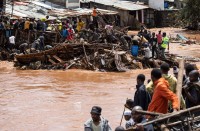Chile’s towering Villarrica volcano erupted on Sunday (March 2) night, spewing incandescent rock and lava fragments.
Located in the Chile’s south in the La Araucania region, Villarrica has seen increased activity since February 6. On February 14 a 500-metre (1640-foot) plume of gas spewed from its massive crater.
According to Sevicio Nacional de Geologia y Mineria (SERNAGEOMIN), Chile’s geology and mining body, bright incandescence outbursts were observed from its crater with small and successive explosions.
Chile’s emergency authority ONEMI have maintained a yellow preventative warning for nearby communities such as Pucon and Curarrehue and hiking up too Villarrica has been restricted.
The mayor of Los Rios, Egon Montecinos said 9,000 people could be evacuated from Pocura and Conaripe, should the alert continue.
Pucon mayor, Carlos Barra, asked the population to remain calm.
“It’s going through a stage where it only has events pertaining to the crater. There has been no other situation we have been able to detect. However, we would like to urge the civil population, the people of Pucon, to remain calm. We have everything prepared to indicate the safest places for evacuation, in case we run the risk of a volcanic eruption.”
The Emergency Operations Committee (COE), run by the regional municipality of Araucania, decided to increase the restricted area for tourists and mountaineers. They will only be able to access the Ski Centre, which is 3,500 meters from the crater. Before, tourists were allowed to get without a kilometre of the crater.
“So far, as we have been instructed, no one can enter the park. Access has been denied for security measures,” said fireman, Joaquin Diaz.
The last major eruption at Villarrica was recorded in 1971 with toxic sulphurous gases from its crater reportedly responsible for at least 15 deaths.
(Reuters)






